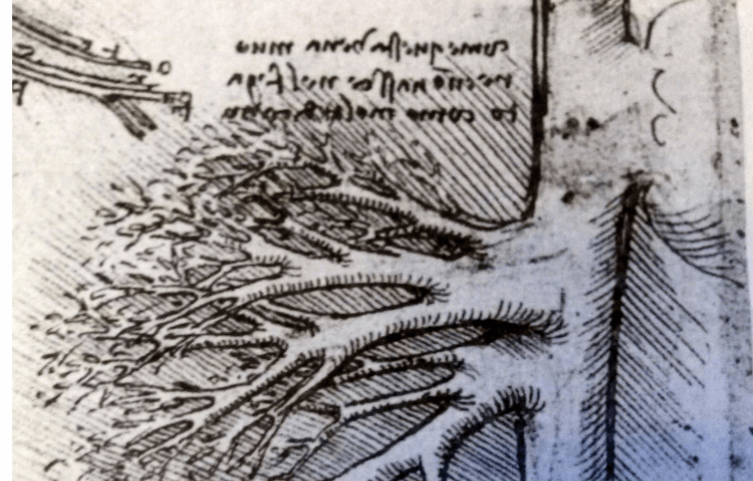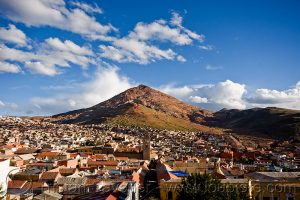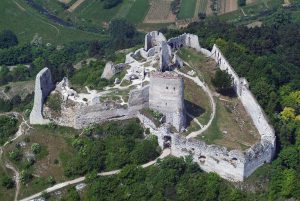In the year 1300, Pope Boniface VIII issued a papal decree, De Sepulturis, which outlawed various methods of lightening the bodies of the diseased for the ease of transport. These methods–common among the Crusaders in the Near East–included the removal of flesh by boiling as well as dismemberment, which also allowed for bodies to be stored in more compact containers. For years after, De Sepulturis was misinterpreted to include the condemnation of anatomical dissection, and for years the study of anatomy would suffer from this misconception. Over time, however, anatomical dissections regained popularity and became important not only to scientists of the body, but also to artists like Michelangelo and Leonardo Da Vinci. However, even into the 1500’s, anatomical sketches were considered distractions unworthy of publication in anatomy textbooks.1

Leonardo Da Vinci, the famous Italian polymath most commonly known today for his painting Mona Lisa, was not renowned for his anatomical diagrams in his time; but unlike his artist peers, his illustrations of the human structure went far beyond the superficial arteries and musculature. While his diagrams do not indicate formal training or even first-hand experience at dissection, Da Vinci began sketching the human anatomy at four different perspectives, simulating a three-dimensional model. Furthermore, Da Vinci sketched the bodily organs, and even wrote about their anatomical functions. It seems that it was Da Vinci’s unquenchable thirst for knowledge and inquiry that drove him to observe deeper than what most deemed necessary. This was characteristic of Leonardo from a young age. Indeed, in 1478, when Leonardo began his career in Florence under the Compagnia de San Luca, he was just sixteen. His early loves for mathematics and mechanics were maintained throughout his life and consistently influenced his vision of the world.4;

Vision was a key aspect to human knowledge to Da Vinci. Being a man of many talents and interests, Da Vinci was drawn to many occupations, and in 1478, after recommending himself to the Duke of Milan, he was made a royal appointee to the duke, Lodovico Sforza, as chief military engineer. In his letter of self-recommendation, Da Vinci referred to himself not only as an artist, but also as a mathematician, architect, and engineer. One of Da Vinci’s first tasks in Milan was to supervise the construction of the Cathedral at Pavia, which would become one of the largest cathedrals in the world. However, it is reported that Da Vinci became so immersed in the theoretical aspects of the physical laws and mechanics involved in the construction of the cathedral that his subordinate had to assume leadership on the practical matters of construction. During this time, Da Vinci also began a practice that has allowed historians and enthusiasts to obtain much deeper insight into the course of Da Vinci’s intellectual studies; like many intellectuals of the Renaissance, Da Vinci began cataloging and recording his studies in notebooks. Many of the anatomical sketches that still survive today were contained in such notebooks. Regardless of his official position as chief military engineer, however, Da Vinci’s primary modes of creation were artistic. Indeed, it was in Milan that Da Vinci finished the paintings Madonna of the Rocks, and The Last Supper; both are masterpieces of human expression and artistic style and technique.5
In 1500, Da Vinci left Milan and continued to paint. He spent several years as a vagabond and finished few paintings during these years, although the famous Mona Lisa was among those left unfinished around the year 1503. At the age of sixty-three, he was appointed to the company of the king of France, near Ambroise, where his chief duty was to keep good company to the king. Leonardo spent the last ten years of his life continuing his research in the realm of the physical sciences, and died on May 2, 1519.6
- Leonardo da Vinci, Leonardo Da Vinci on the Human Body: The Anatomical, Physiological, and Embryological Drawings of Leonardo Da Vinci, eds. Charles Donald O’Malley and John Bertrand de Cusance Morant Saunders (New York: H. Schuman, 1952), 13. ↵
- Leonardo da Vinci, Leonardo Da Vinci on the Human Body: The Anatomical, Physiological, and Embryological Drawings of Leonardo Da Vinci, eds. Charles Donald O’Malley and John Bertrand de Cusance Morant Saunders (New York: H. Schuman, 1952), 131. ↵
- Leonardo da Vinci, Leonardo Da Vinci on the Human Body: The Anatomical, Physiological, and Embryological Drawings of Leonardo Da Vinci, eds. Charles Donald O’Malley and John Bertrand de Cusance Morant Saunders (New York: H. Schuman, 1952), 14-16. ↵
- Leonardo da Vinci, Leonardo Da Vinci on the Human Body: The Anatomical, Physiological, and Embryological Drawings of Leonardo Da Vinci, eds. Charles Donald O’Malley and John Bertrand de Cusance Morant Saunders (New York: H. Schuman, 1952), 14-19 ↵
- Leonardo da Vinci, Leonardo Da Vinci on the Human Body: The Anatomical, Physiological, and Embryological Drawings of Leonardo Da Vinci, eds. Charles Donald O’Malley and John Bertrand de Cusance Morant Saunders (New York: H. Schuman, 1952), 18-21; Toby Lester, Da Vinci’s Ghost : Genius, Obsession, and How Leonardo Created the World in His Own Image (New York : Free Press, 2012), 117-121; Salem Press Biographical Encyclopedia, 2016, s.v. “Leonardo Da Vinci,” by James Livingston. ↵
- Salem Press Biographical Encyclopedia, 2016, s.v. “Leonardo Da Vinci,” by James Livingston. ↵



90 comments
Emily Davey
I loved this article! The Renaissance era of art and science always fascinates and inspires me. I had no idea that many artists attended anatomical, medical, displays as a means of learning about the body for their art, that is incredible. Amazing too, that so many of the medical sketches we have today in fact may trace their origins to an artists sketchbook, rather than any medical texts. His sketch in particular caught my eye, I like your use of pictures. His artificial system seems like it would be very useful as an art reference, for marking where to show veins and colour through the skin. Wonderful article!
Madeline Chandler
Such an informative and interesting article! Very captivating. Honestly I am familiar with Leonardo Da Vinci, like many other. However I did not know thing about him in this detail. He was skilled in the arts, knowledgable in the sciences, understood complex math, in short he truly left his mark on history. This was such a transition for world in regard to the findings and understandings of Leonardo Da Vinci. I loved reading your article. Great job.
Nicolas Llosa
Leonardo Da Vinci is one of the most known artists. He is known for many paintings, the most famous being the Mona Lisa. He is known as one of the best artists of the renaissance, but he did way more than paintings. He had many interests and was talented in many fields besides painting. He covered engineering, architecture, even human anatomy. He designed various models of different projects he had in mind, made drawings of human anatomy like the Vitruvian Man, and many more projects besides his paintings. I think you could see Da Vinci as someone ahead of his time. His work was so precise and so advanced for his time. He was an innovative, creative, and talented person who dedicated his life to art, but also innovation and challenging himself to think in a way nobody in his time was.
Samson Pullattu
Whenever I think about the term “Renaissance man”, the first name that comes to mind is Leonardo Da Vinci, as I am sure is the case for many others as well. His brilliant mind led him to be masters of many paths including constructing architecture, creating inventions, making paintings, and studying anatomy. Maybe if he were appreciated more in his time, we could see more of his work today, which is something that many people would cherish now.
Elizabeth Santos
Leonardo Da Vinci was clearly so advanced in thought for his time, and was certainly a master of subjects regardless of formal training- his work remains iconic today. I appreciate the article for diving into this artist, among other specialized subjects as mathematician and engineer. In high school, I had heard of his contributions to art and medicine, and so I was pleasantly surprised to read about his other passions in this article. Also amazing is how he spent his final years attaining knowledge.
Nathan Castillo
I personally love the art of realism and how it reflects from the human body. I never knew that Da Vinci had such a huge role in realism and anatomy. I always knew him as an inventor and an artist, but seeing that he used dissections done by apothecaries to obtain knowledge of the human body really fascinated me. It definitely paid off in the future having that Da Vinci was a man thirsting for knowledge. Truly amazing, I love his work and his take on realism and anatomy.
Kennedy Arcos
I remember learning about Leonardo Da Vinci various times throughout high school. This article was very informing and I learned way more than I already knew. I have always found it interesting how he was not only an artist but many other things as well. He was able to take his interests and accomplish so many things. I never actually realized how intelligent he was until reading this article. This was definitely a great article!
Meadow Arriaga
Leonardo Da Vinci and his art was not appreciated during his time. He was different amongst other artists at the time. People did not recognize the depth his art reflected his thinking.Textbooks would not go in depth of this understanding. He was creating ideas that went beyond basic concepts, like that of human anatomy. Over time his art was turned to masterpieces and he was able to study research.
Michael Lazcano
Leonardo Da Vinci is arguably one of the greatest intellectuals in human history. Not only did he pursue endeavors in the arts, but he also dabbled in the sciences as well. His quest for more knowledge, and constantly working shows that perseverance pays off. His notebooks continue to fascinate people with their anatomical sketches, mathematical formulas and so on. He was truly a renaissance man, and before his time.
Victoria Davis
I did not know as much previous knowledge about Da Vinci as I did about Van Gough so it was such an interesting article to read. It was super neat how he was interested in more than just art and involved with the scientific aspect. This article included a lot of useful information that provides you enough information so you can understand his significance.